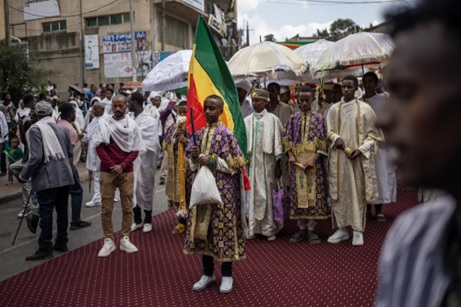
As Ethiopia hosted the African Union Summit last month, the government’s attempt to generate a sense of exuberance in the capital city, Addis Ababa, masked the expanding spiral of instability and humanitarian tragedy in the country.

On Jan. 29, in Merawi, a small town in the Amhara region, members of the Ethiopian National Defense Forces murdered dozens of civilians execution style, according to national and international human rights groups and media reports. Although the government denies targeting civilians, the killings were reportedly motivated by revenge, following a bloody state confrontation with so-called Fano fighters—Amhara combatants who have been fighting government forces since August 2023.
The Fano represent an armed manifestation of the longstanding grievances of the Amhara people, rooted in decades-old systemic marginalization, mass killings, and displacement of Amharas in various parts of the country and exacerbated by dashed hopes in the willingness and ability of Ethiopian Prime Minister Abiy Ahmed’s government to stem the group’s marginalization. While the movement remains decentralized and there is no formal political manifesto, the militia proclaims to protect Amhara interests by working to transform what it perceives as an anti-Amhara sociopolitical system. It seeks to establish a new order grounded in equality among all groups, respect for individual rights, rule of law, and democracy.
The Fano preceded but rose to prominence during the Tigray War (2020-22), when they fought beside government forces. During the war, they—along with the Ethiopian army, Tigrayan fighters, and Eritrean troops—faced accusations of human rights abuses.
The Amhara conflict coexists with a no-war-no-peace situation in the Tigray region, where famine-like conditions and starvation-induced deaths have been reported, and armed confrontation, kidnappings, and regular travel disruptions in the Oromia region. Ethiopia’s economy is also in a precarious state, with the government defaulting on interest payments for loans with private creditors.
The January Merawi massacre is the most gruesome so far, and regrettably not the first. In September 2023, similar civilian killings were reported in the historic Amhara cities of Lalibela and Majete. The Merawi massacre elicited domestic and international condemnation and calls for transparent investigation from the Ethiopian National Human Rights Commission, the United States, and the European Union.
The series of tragedies underscore a fundamental and concerning shift in the nature of the conflict. As armed confrontation drags on, weary government soldiers inevitably start to consider the broader public complicit in the rebellion and are therefore more willing to engage in collective punishment of Amhara communities, which in turn intensifies animosity and cycles of violence.
Despite some stalled efforts to peacefully end the war in Oromia and the government paying lip service to a possible negotiation in Amhara, political and military leaders continue to deploy the language of force and pursue militarized responses. Indeed, on Feb. 2, the government extended the state of emergency it first imposed in August 2023 in response to the insurgency.
The state of emergency has given government forces carte blanche to engage in the extrajudicial arrest of thousands of people, including prominent Amhara members of parliament, who have been detained for months despite enjoying constitutional immunity from arrest and prosecution.
Read more: Ethiopia’s Amhara Conflict Could Spark Civil War
Source: FP


